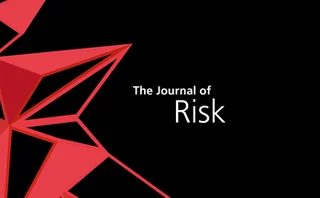Technical paper/Portfolio management
The impact of greenhouse gas aversion on optimal portfolios
The author applies greenhouse gas aversion to the mean-variance portfolio framework and proposes a new portfolio performance measure for greenhouse-gas-averse investors.
Momentum transformer: an interpretable deep learning trading model
An attention-based deep learning model for trading is presented
Dynamic rebalancing of a risk parity investment portfolio
The authors examine the All-Weather portfolio in relation to other popular portfolios and investigate the impact of various static and dynamic portfolio-rebalancing strategies on the All-Weather portfolio.
Linking performance of vanilla options to the volatility premium
A framework to account for vanilla options' performance in trading strategies is presented
Does reinvesting payouts in plain vanilla exchange-traded funds enhance household portfolio performance?
This study analyzes whether reinvesting payouts in exchange-traded funds that replicate broad and internationally diversified market indexes enhances households’ portfolio performance after transaction costs.
The risk-reversal premium
We show that including risk reversals in an equity portfolio creates a better portfolio compared with a pure index position.
Portfolio rebalancing and seasonality in Canadian financial markets
Using Canadian data for the period 1957–2018, this paper provides evidence in support of portfolio rebalancing by professional portfolio managers.
Fat-tailed factors
Independent component analysis is proposed as an alternative to principal component analysis
A practitioner’s view of the long-term and recent performance of multifactor investment strategies
In this paper the author studies the performance of factor investment strategies from a practitioner’s point of view.
Goal-based wealth management with reinforcement learning
A combination of machine learning techniques provides multi-period portfolio optimisation
Zooming in on equity factor crowding
A measure for crowding in trades is derived from supply and demand imbalances
Equally diversified or equally weighted?
New diversification measure enables construction of equally diversified portfolios
Estimating the contagion effect through the portfolio channel using a network approach
This work studies contagion risk through the portfolio investment channel using network analysis and simulation on bilateral cross-country data.
Portfolio management of Commodity Trading Advisors with volatility-targeting
This paper shows analytically that a volatility-targeted allocation methodology improves the risk-adjusted performance of portfolios under a broad set of assumptions regarding the serial correlation of returns and the dependence of the expected Sharpe…
A triptych approach for reverse stress testing of complex portfolios
Pascal Traccucci et al present an extended reverse stress test triptych approach with three variables
Forecasting value-at-risk
Alvin Stroyny and Tim Wilding build a dynamic risk framework for multi-asset global portfolios
Tying allocation to selection
Hamza Bahaji introduces a new approach to core-satellite investing, the compound portfolio insurance
The implications of value-at-risk and short-selling restrictions for portfolio manager performance
This paper provides a framework to analyze the performance of a portfolio manager under a value-at-risk (VaR) constraint, in a Markowitz setup.
Black was right: price is within a factor 2 of value
CFM’s quants verify Fisher Black’s intuition on mean reversion still applies today
BV–VPIN: Measuring the impact of order flow toxicity and liquidity on international equity markets
The authors analyze the impact of different values of the VBS and sample size applied as inputs in a BV–VPIN model based on the US market in order to ascertain the optimal criteria for application across all other countries in our data set.
International and temporal diversifications: the best of both worlds?
In this paper, the authors focus on seven stock market indexes: two US, three European, one emerging and one Japanese. They select different pairs of markets and, with the help of wavelets, decompose these series at different timescales.















